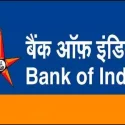Balancing the Books: A Small Business Guide to Effective Bank Reconciliation
Keeping a precise balance of money flowing in and out is essential for any small business, impacting everything from daily operations to long-term financial health. Just like a cash flow statement gives you a clear view of your financial stability, effective bank reconciliation ensures your financial records and bank statements are in perfect sync. This alignment is key to operating smoothly and managing your finances reliably.

Source: kitzcorner/Shutterstock.com
Understanding Bank Reconciliation and Its Importance
Bank reconciliation is the meticulous process of aligning your company’s internal financial records with your bank statements. Let’s look at why it is so important for small businesses like yours:
- Accuracy in Accounting: Bank reconciliation ensures that your books remain accurate. It identifies discrepancies such as unrecorded transactions, errors, and overlooked items like bank fees, refunds, and pending payments.
- Financial Insight: By regularly reconciling your accounts, you gain a clear picture of your financial status, including receivables, payables, and cash on hand. This detailed financial insight is vital for budgeting, planning future expenses, and making strategic business decisions.
- Fraud Detection: Routine reconciliation allows for the early detection of irregular or suspicious transactions. This proactive approach can help prevent more significant financial issues in the future.
- Tax Accuracy: Keeping your accounts current can help determine tax liabilities accurately. It ensures you report the correct financial information, avoiding potential penalties or interest charges from tax authorities.
Regularly engaging in bank reconciliation ensures that your financial operations reflect the true state of your business. It offers a clear picture that’s essential for strategic planning and your organization’s continued health and growth.
Preparing for Bank Reconciliation
Preparing for reconciliation involves setting up a system for organizing, tracking, and carefully reviewing all financial transactions. Here are the documents and records involved:
- Bank Statements: These are official records from your bank detailing all transactions within a specific period. They include deposits, withdrawals, fees, and any other banking activities. Ensuring you have the latest statements ready for comparison is the initial step in the reconciliation process.
- Business Ledgers:This comprehensive record includes every transaction your business has conducted, whether it’s sales, expenses, loan payments, or cash receipts. Your business ledger is the core of your financial records, and it must be meticulously maintained to match the bank’s records accurately.
The Reconciliation Process
The process of involves several detailed steps, each as critical as the next in maintaining your financial equilibrium:
- Compare deposits and withdrawals: Make sure that every transaction, including the amounts and dates of deposits and withdrawals, matches exactly between your records and the bank’s.
- Adjust for additional fees and interest: Factor in bank-related expenses or earnings not previously recorded, such as interest or service fees.
- Address outstanding transactions: Note any checks not yet cashed or deposits not cleared.
- Ensure all electronic transactions are accounted for: Double-check that all digital transfers and automated payments are recorded accurately.

Source: kitzcorner/Shutterstock.com
Common Pitfalls and How to Avoid Them
Even with painstaking planning and preparation, errors can slip through. Here are some common pitfalls you might encounter when managing your bank reconciliation tasks and strategies to help you avoid them:
Incorrect Data Entry
- Scenario:Mistyping “$530” as “$350” in your ledger.
- Prevention: Always double-check entries as you make them. Consider implementing a dual control system where two individuals verify data entry, especially for significant transactions. Another option is to use automated tools where possible.
Overlooked Bank Fees
- Scenario: Monthly maintenance fees or transaction fees not recorded in your business ledger.
- Prevention: Schedule regular reviews of your bank statements specifically to identify fees and charges. Ensure all such costs are immediately recorded in your business ledgers to maintain alignment.
Untimely Recording of Transactions
- Scenario: Recording a deposit in your ledger a few days after it has appeared in your bank statement due to delayed paperwork.
- Prevention: Streamline and automate your transaction recording processes using accounting software that syncs with your bank accounts, updating entries in real-time or near-real-time.
Forgotten or Lost Receipts
- Scenario: Failing to record a cash expenditure because the receipt was misplaced.
- Prevention: Implement a robust system for receipt management. Use digital tools to scan and store receipts electronically immediately upon transaction.
Unreconciled Electronic Transactions
- Scenario:Not accounting for automatic monthly subscription payments in the ledger.
- Prevention: Set up alerts for all electronic transactions and systematically verify each against your ledger.
Outdated Recordkeeping:
- Scenario: Using last month’s data to reconcile this month’s bank statement due to not updating the books regularly.
- Prevention: Maintain a strict schedule for updating ledgers and perform bank reconciliations monthly to ensure all data is current.
Duplicate Transactions:
- Scenario: Recording a transaction twice because it was listed under two different names.
- Prevention: Regularly review your financial records for any duplicates, particularly when different team members may handle parts of the recording process.

Source: ktasimar/Shutterstock.com
Streamlining The Bank Reconciliation Process
Bank reconciliation can indeed be a time-consuming process, especially for small businesses that might not have dedicated accounting teams. However, the importance of accuracy between bank statements and business ledgers cannot be overstated. If you’re bogged down by the task, consider how accounting software could free up both time and headaches. It can help automate and streamline the process, reducing the potential for errors and alleviating the stress associated with manual reconciliation.
Automate Transaction Imports
Connect your accounting software to your bank, credit cards, and other payment platforms like PayPal or Square to automatically import your transactions.
Generate Reports
After reconciling accounts, accounting software automatically generates a reconciliation report. This report details the starting and ending balances and categorizes transactions as either cleared or uncleared. It proves invaluable for troubleshooting any issues in subsequent reconciliations.
Identify Discrepancies
Discrepancies are inevitable, but accounting software provides tools to resolve them quickly. Reports are designed to help pinpoint any issues swiftly, saving time and effort.
Collaborate with Accounting
Set up a separate login for your accountant. This will facilitate easy access to necessary reports and information and improve workflow.
Consistent Bank Reconciliation Is The Key to Financial Accuracy and Smart Cash Management
Regular bank reconciliation helps ensure the integrity of your financial records. It empowers you to operate with confidence and strategic insight. By doing this on a regular basis, whether manually or by leveraging accounting software technology, you can make informed decisions about cash flow management and help set your business up for success.



